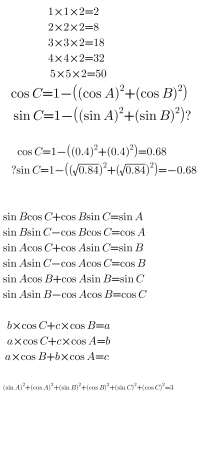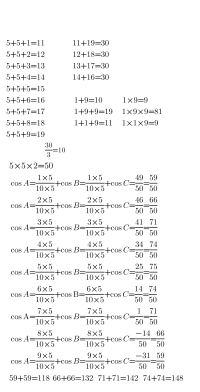prince mike
New member
- Joined
- Feb 14, 2024
- Messages
- 13
Polygons inscribed in a circle of a diameter of 1 unit:
Let there be an equilateral triangle inscribed in a circle and the measure of the sides of the triangle is a measure of an angle of sin of 60°, as the measures of the angles of the triangles decrease by a multiple of 2 the sides of the triangles increase by a multiple of 2. From 3 sides to 6 sides to 12 sides to 24 etc... The sides of the polygons are a measure of angles with isosceles triangles in each polygons and in Isosceles triangle you only need one angle to find the lenght of the sides of the triangles since the sides correspond to the measure of an angle.
The following statements hold true for isosceles triangles:
$\ cos C=1-(\ (cos A)^2 + \ (cos B)^2)$
$\ sin C=1-(\ (sin A)^2 + \ (sin B)^2)$
I posted it in Wikipedia and it was an original search and
Let there be an equilateral triangle inscribed in a circle and the measure of the sides of the triangle is a measure of an angle of sin of 60°, as the measures of the angles of the triangles decrease by a multiple of 2 the sides of the triangles increase by a multiple of 2. From 3 sides to 6 sides to 12 sides to 24 etc... The sides of the polygons are a measure of angles with isosceles triangles in each polygons and in Isosceles triangle you only need one angle to find the lenght of the sides of the triangles since the sides correspond to the measure of an angle.
The following statements hold true for isosceles triangles:
$\ cos C=1-(\ (cos A)^2 + \ (cos B)^2)$
$\ sin C=1-(\ (sin A)^2 + \ (sin B)^2)$
I posted it in Wikipedia and it was an original search and


